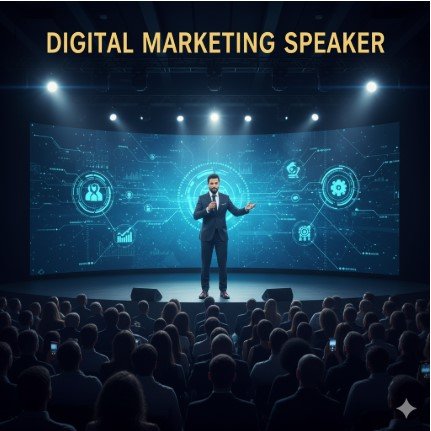Artificial Intelligence has shifted from a supporting tool into the very backbone of enterprise operations, product innovation, and customer engagement. Among the most transformative developments in this space is the rise of AI agents—autonomous systems capable of reasoning, decision-making, and task execution with minimal human input. As organizations move from experimenting with AI models to deploying agentic AI systems at scale, the question becomes: Which ecosystem or provider offers the most reliable foundation for AI agent development?
Today, three companies stand at the forefront of this transformation: OpenAI, Anthropic, and Google. Each has its own philosophy, models, frameworks, and strengths. This blog will take a deep dive into how these tech giants are shaping AI agent development, comparing their approaches, capabilities, and long-term implications for businesses seeking to harness the power of autonomous agents.
The Rise of AI Agents
Before diving into the comparison, it’s important to understand why AI agent development is gaining so much traction. Unlike traditional AI models that rely on human prompts or pre-defined rules, AI agents are designed to autonomously pursue goals. They can plan, execute tasks, use external tools, collaborate with other agents, and adapt based on feedback.
For example, a marketing AI agent might design an entire campaign—researching audience segments, generating copy, scheduling posts, and analyzing performance data—without step-by-step instructions from a human. Similarly, a logistics AI agent could autonomously optimize supply chain routes based on real-time traffic, weather, and shipping data.
Building such agents requires more than raw AI models. It demands infrastructure, reasoning frameworks, tool integration, and governance mechanisms—areas where OpenAI, Anthropic, and Google bring different approaches to the table.
OpenAI: Practical Agentic Workflows with GPT
OpenAI has been one of the most influential players in shaping the modern AI landscape. Its flagship models—GPT-4 and beyond—are widely used for everything from chatbots to enterprise automation. But OpenAI’s true influence in AI agent development lies in its tooling ecosystem and its vision of making LLMs act as general-purpose reasoning engines.
Key Strengths
-
Function Calling & Tool Use
OpenAI introduced function calling and API integration, allowing agents to interact with external systems in structured ways. This enables developers to build agents that can pull from databases, execute transactions, or trigger workflows. -
Memory & Context Handling
Through innovations in long-context models and memory features, OpenAI supports agents that can maintain continuity across sessions, track goals, and adapt over time. -
Ecosystem Maturity
With integrations into Microsoft’s ecosystem (Azure OpenAI Service, Copilot, Office 365), OpenAI has strong enterprise-ready deployment pathways. -
Agentic Frameworks
Developers often combine GPT with LangChain, AutoGPT, or Microsoft’s Autogen to create autonomous agents, benefitting from a large open-source ecosystem.
Limitations
-
Closed-Source Models: Unlike some competitors, OpenAI does not open-source its models, limiting transparency.
-
Cost Scaling: GPT-based agents can become expensive when handling continuous, long-running tasks.
-
Safety Alignment: While robust, OpenAI’s alignment mechanisms sometimes err on the side of over-restriction, limiting flexibility.
Best Fit
OpenAI is best suited for organizations looking for practical, enterprise-ready agents that integrate seamlessly with existing software and workflows. It excels in business productivity, customer service, and knowledge management applications.
Anthropic: Safety-First Agents with Claude
Founded by former OpenAI researchers, Anthropic has quickly emerged as a key player with its Claude models. Anthropic’s philosophy emphasizes constitutional AI, where models are guided by explicit ethical and behavioral principles. For AI agent development, this focus on alignment and safety is both a differentiator and a strategic advantage.
Key Strengths
-
Constitutional AI
Anthropic’s Claude models are trained with a set of principles (its “constitution”) that guide their behavior. This makes them more steerable, transparent, and safe, which is critical for autonomous agents that make independent decisions. -
Context Length Advantage
Claude 2 and 3 models offer extended context windows, enabling agents to process entire documents, research datasets, or multi-step conversations without losing coherence. -
Ethical Guardrails
For businesses in regulated industries (finance, healthcare, legal), Claude offers trustworthy agentic behavior that reduces risks of harmful or biased outputs. -
Developer Friendliness
Anthropic’s APIs are straightforward and integrate well with existing agent frameworks, making it easier for startups and enterprises to experiment with agentic workflows.
Limitations
-
Smaller Ecosystem: Compared to OpenAI, Anthropic has fewer enterprise integrations.
-
Less Tooling: While strong in reasoning, Claude lacks some of the structured tool-use features OpenAI has refined.
-
Market Reach: Without Microsoft-scale partnerships, adoption is slower in large enterprises.
Best Fit
Anthropic is ideal for businesses that prioritize safety, ethics, and trustworthiness in their AI agents. Use cases include compliance automation, legal analysis, healthcare assistants, and customer-facing roles where alignment is critical.
Google: Scaling AI Agents with Gemini
Google’s contribution to AI agent development comes through its Gemini family of models (successors to PaLM 2) and its broad ecosystem across Google Cloud, Workspace, and Android. Google envisions a future where autonomous agents aren’t just assistants but deeply embedded in every digital interaction.
Key Strengths
-
Multimodal Intelligence
Gemini models are natively multimodal, meaning they can handle text, images, code, and even video inputs. This makes them powerful for agents that need to interpret visual, textual, and structured data simultaneously. -
Deep Cloud Integration
Through Google Cloud Vertex AI, Gemini-powered agents can directly integrate with enterprise datasets, databases, and MLOps pipelines. This makes it attractive for enterprise-scale AI adoption. -
Search & Data Access
Leveraging Google’s unparalleled search infrastructure, Gemini agents can access real-time information, making them excellent for research, monitoring, and dynamic decision-making. -
Android & App Ecosystem
Google is uniquely positioned to deploy AI agents across billions of devices, enabling consumer-facing agent applications at massive scale.
Limitations
-
Enterprise Trust: Google’s track record of discontinuing products raises concerns for businesses investing heavily in long-term agent solutions.
-
Less Human-Like Conversation: While strong in reasoning and multimodal processing, Gemini agents sometimes lag behind GPT and Claude in conversational depth.
-
Complexity: Google’s developer ecosystem can feel fragmented, making agent development less straightforward for smaller teams.
Best Fit
Google is best suited for enterprises needing multimodal agents at scale, especially in sectors like retail, media, logistics, and cloud-native industries. Its strength lies in bridging vast data pipelines with flexible agent intelligence.
Comparing OpenAI, Anthropic, and Google
When evaluating which provider to choose for AI agent development, the choice comes down to priorities:
-
OpenAI → Best for Enterprise Productivity
Seamless integration, strong ecosystem, practical business applications. -
Anthropic → Best for Ethical & Safe Agents
Trustworthy reasoning, strong alignment, ideal for regulated industries. -
Google → Best for Multimodal & Scalable Agents
Handles diverse data types, deep cloud integration, global reach.
In practice, many businesses may use a combination of these ecosystems—OpenAI for customer-facing workflows, Anthropic for compliance-driven tasks, and Google for multimodal enterprise analytics.
The Future of AI Agent Development
As these three companies compete and collaborate in the AI space, the future of AI agent development will likely involve:
-
Multi-Agent Ecosystems: Agents built on different providers interacting seamlessly.
-
Greater Autonomy: Agents moving from task executors to decision-makers.
-
Domain-Specific Agents: Providers offering industry-tailored agents for healthcare, finance, or manufacturing.
-
Interoperability Standards: Open frameworks allowing agents from different ecosystems to work together.
This future is less about one winner and more about a pluralistic agentic ecosystem—where businesses choose the right agent for the right context.
Conclusion
The rise of autonomous agents is one of the most significant shifts in technology since the cloud revolution. OpenAI, Anthropic, and Google are each shaping this transformation in unique ways—OpenAI with practical workflows and enterprise integration, Anthropic with safety-first design, and Google with multimodal intelligence and scale.
For businesses, the decision is not simply about which model performs best in a benchmark but about which provider aligns with their strategic goals, ethical responsibilities, and operational scale. In many cases, the smartest path will be hybrid—leveraging the strengths of each ecosystem.
What’s clear is that AI agents are not a passing trend. They are the building blocks of the next generation of digital enterprises, and the companies that master their development today will define the future of work, commerce, and innovation tomorrow.





